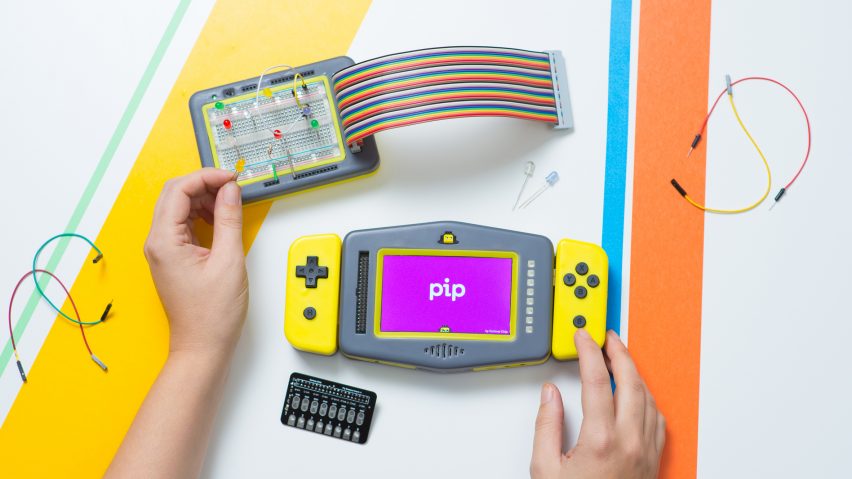UK tech start-up Curious Chip has created a handheld gaming device that teaches children to code their own games and apps.
The Pip device, which is currently being funded via a Kickstarter campaign is designed to help novices get to grips with the basics of coding. It allows users to program games and apps in multiple coding languages – including Javascript, HTML and Python.
Although primarily aimed at children, the device is designed to be suitable for all ages and all tech levels.
"We made Pip so that people could easily dive in deeper and learn how technology works on the inside, empowering them to take control of technology however they like," said Jason Frame, chief technology officer at Curious Chip.
"We wanted to make something that taught coding skills with real hardware. It was important for us that people could use skills learnt with Pip and go on to invent beyond our platform," CEO Sukhvir Dhillon continued.
To begin with, users familiarise themselves with the device by playing well-known games, such as Snake, Pac-Man and Minecraft. They can also download additional games and apps from Pip's online arcade.
They then progress to using step-by-step guides for coding their own games and apps.
These tutorials range from simple to more advanced levels, from learning how to make LEDs flash, to programming smart devices using different coding languages.
Pip is powered Raspberry Pi, a tiny computer that is specifically designed to educate users about coding.
The pocket-sized console features a touchscreen, eight programmable red, green and blue LED lights, a microphone, speakers and motion sensors.
It also comes with USB side controllers on either side of the console – enabling two players to game together.
In order to make Pip as accessible as possible, Curious Chip made it compatible with components that are readily available in shops.
"We're really excited because Pip is open and works with cheap, off-the-shelf components already out there," said the start-up.
"With Pip it's really easy for you to tinker with hardware. Plug in a moisture sensor to check on plants, or hook up a proximity sensor to make an alarm, or add motors and lights to your LEGO creations and bring them to life with Pip."
Pip is the latest device aimed at teaching children how to code. Last year, London company Primo Toys released a "hands on" wooden play set designed to teach three-year-old children the principles of coding without the use of screens.
More recently, Lego announced a kit for building and programming robots, which allows users to assemble moving toys from a range of programmable elements and the Danish company's iconic plastic bricks.

